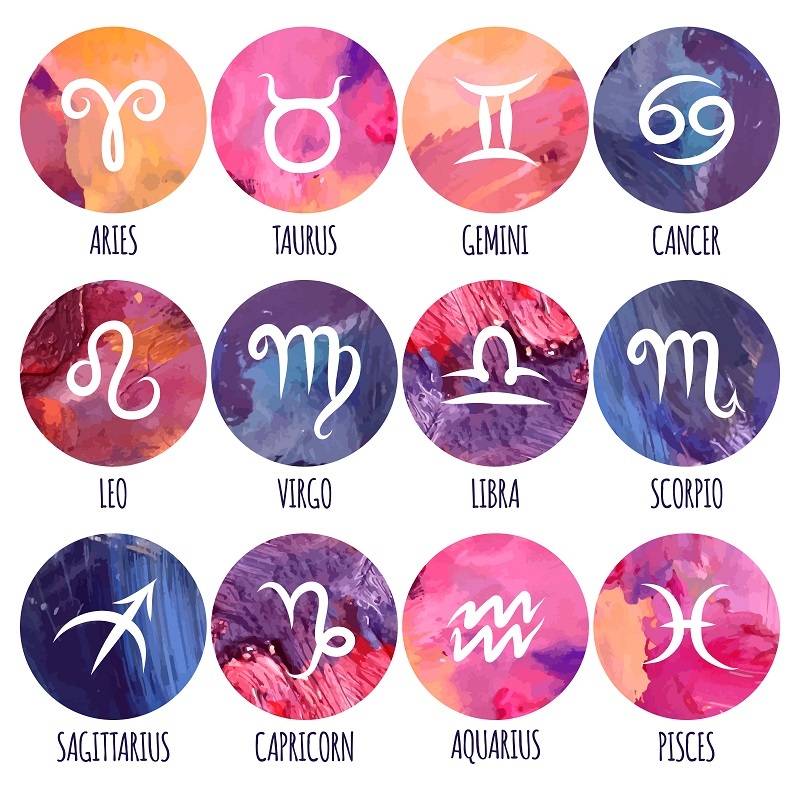Simple Steps for Poinsettia Longevity
Posted on 27/08/2025
Simple Steps for Poinsettia Longevity
Poinsettias are a favorite decorative plant, especially during the holiday season. With their vibrant red, pink, or white bracts, they add festive cheer to any home or office. However, keeping poinsettias healthy and beautiful long after the festivities can be a challenge. Many people find their poinsettias withering or dropping leaves soon after purchase. Fortunately, with a few simple care techniques, you can extend the life of your poinsettias and enjoy their beauty for months to come.

Understanding Poinsettias: Origins and Basic Care Needs
Poinsettias (Euphorbia pulcherrima) are native to Mexico and Central America. Their popularity skyrocketed in the United States after being introduced as a holiday plant in the 1800s. Despite their popularity, poinsettia plant longevity depends on replicating their natural tropical conditions the best we can indoors.
Why Do Poinsettias Lose Their Brilliance?
Poinsettias are often misunderstood. Many people mistakenly believe they are short-lived or disposable, but with the right care, they can thrive for much longer. The main reasons these attractive plants decline include:
- Overwatering or Underwatering
- Exposure to drafts or temperature extremes
- Insufficient light
- Improper fertilizing
- Neglect after the holidays
Best Practices for Prolonging Your Poinsettia's Life
Following these simple steps for poinsettia longevity will help ensure your plant remains healthy and vibrant, maximizing its lifespan and beauty.
Step 1: Choosing a Healthy Poinsettia
The longevity of your poinsettia begins at the store. When purchasing, select a healthy plant by:
- Looking for bushy plants with undamaged, deep green leaves
- Avoiding plants with yellowing or wilting leaves
- Checking for weak, spindly stems (avoid these)
- Ensuring the small yellow flowers (cyathia) in the center are intact and not falling off
Healthy starts make all the difference when it comes to keeping poinsettias alive longer.
Step 2: Perfect Placement Matters
Poinsettias love bright, indirect sunlight. Place your plant near a north or east-facing window where it will receive ample light but be safe from direct afternoon rays, which can scorch the leaves. Remember:
- Avoid drafty areas or cold windowsills
- Keep away from hot air vents, fireplaces, or heaters
- Ideal temperature: 65-70?F (18-21?C) during the day and not below 60?F (15?C) at night
Consistent temperature and gentle exposure to light are key factors for poinsettia health and longevity.
Step 3: Water Wisely
Many underline{poinsettia care problems} arise from overwatering or letting the soil dry out excessively. Follow these watering tips:
- Check the soil daily by touching it with your finger
- Water when the soil surface just becomes dry to the touch (about once or twice a week)
- Ensure excess water drains away to avoid root rot; if in a decorative sleeve, remove the sleeve to drain thoroughly
- Never let the poinsettia sit in standing water
Step 4: Maintain Ideal Humidity
Being tropical plants, poinsettias prefer moderate to high humidity. Dry air, common in winter homes, can shorten the lifespan of your poinsettia. To increase humidity:
- Use a humidity tray (a saucer lined with pebbles and water, keeping the pot above water level)
- Group your poinsettia with other plants to create a humid micro-environment
- Mist the air (not the leaves) around the plant occasionally
Improving humidity helps extend the life expectancy of poinsettias indoors.
Step 5: Smart Fertilizing for Vigorous Growth
Fertilizing isn't necessary while your poinsettia is in bloom. However, if you want your plant to thrive long-term:
- Begin feeding a balanced, water-soluble houseplant fertilizer monthly starting in late winter (February or March)
- Follow label instructions to avoid over-fertilizing
- Fertilizing too soon or heavily can damage roots and reduce longevity
Step 6: Pruning and General Maintenance
Some simple grooming steps encourage new growth and help you keep your poinsettia thriving:
- Remove faded or yellowing leaves promptly
- Prune stems back to 4-6 inches after blooming and again in the spring to promote bushiness
- Repot as necessary in spring with fresh, well-draining potting mix
Regular pruning and repotting can greatly extend the lifespan of poinsettias.
Annual Care Cycle for Extended Poinsettia Longevity
With a little attention to timing, you can keep your poinsettia healthy for years. Here's a simple annual care calendar:
- January - March: Keep your poinsettia in bright, indirect light. Water as needed, avoid drafts and protect from temperature extremes.
- April - May: Gradually reduce watering as the plant begins to enter dormancy. Prune back the plant to 4-6 inches. When outdoor temperatures stay above 50?F (10?C) at night, move to a sheltered, partially shaded spot outside.
- June - August: Regularly fertilize and water as new growth appears. Pinch back stems in early July and again in August to encourage bushiness.
- September: Bring the plant indoors before temperatures drop below 60?F (15?C).
- October - Early December: For reblooming, provide 12-14 hours of complete darkness each night (cover or place in a dark closet) with bright light during the day. Continue regular care.
- December: Enjoy your rebloomed poinsettia or purchase a new one for display!
Can Poinsettias Be Kept Year After Year?
Yes! With correct care, poinsettias can become striking houseplants and even rebloom the following year. Be patient; persuading a poinsettia to rebloom is a fun challenge for dedicated plant lovers.
Common Problems and Solutions for Poinsettia Longevity
Leaf Drop
Leaf loss is one of the most common issues and is caused by:
- Sudden temperature changes
- Exposure to drafts
- Overwatering or underwatering
- Lack of light
Solution: Place poinsettia in a stable, warm environment with good but indirect light and consistent watering habits.
Pale or Yellow Leaves
Chlorosis (yellowing) is usually due to poor light, old age, or nutrient deficiency.
- Provide brighter indirect light
- Fertilize lightly if the bloom has faded
- Remove spent foliage to encourage new growth
Wilting
- Wilting can be a sign of either too much or too little water
Solution: Check soil moisture before watering; roots should never be soggy or completely dry.
Pests
- Poinsettias are relatively pest-free but can attract whiteflies or spider mites in dry conditions.
- Wash leaves with lukewarm water or treat with insecticidal soap if needed.
Toxicity: Are Poinsettias Dangerous?
Poinsettias have a reputation for being highly toxic. While their milky sap can cause mild irritation if ingested and is best kept away from sensitive pets and children, poinsettia toxicity is generally overstated.
Bonus Tips for Poinsettia Longevity
- Remove Decorative Foil: Many gift poinsettias come wrapped in foil. Puncture the bottom or remove it entirely to prevent water accumulation and root rot.
- Rotate Your Plant: Turn the pot every few days to ensure even light exposure and bushy growth.
- Check for Pests Regularly: Inspect leaves and stems for signs of insects or diseases.
- Use Clean Tools: Always use sterilized scissors or pruners to avoid disease transmission.
- Monitor for Stress Signs: Quick intervention at the first sign of trouble (wilt, leaf drop) can save your poinsettia.

Frequently Asked Questions About Poinsettia Longevity
How long do poinsettias last indoors?
With proper care, poinsettias will thrive indoors for several months, often through March or longer.
Can I put my poinsettia outside?
Yes! When the risk of frost has passed and nighttime temperatures stay above 50?F (10?C), place your poinsettia outdoors in a sheltered location with partial shade for summer growth.
How do I make my poinsettia rebloom?
For reblooming, provide 12-14 hours of uninterrupted darkness daily from late September to early December, along with regular watering and feeding.
Do poinsettias need to be repotted?
If your plant outgrows its pot or the soil becomes exhausted, repot in the spring using a well-draining mix one size up from the current container.
Is it safe to compost poinsettias?
Yes, poinsettias can be composted. The sap is generally harmless in a backyard compost pile.
Conclusion: Enjoy Vibrant Poinsettias Year After Year
Poinsettia longevity is within reach for any indoor gardener. By choosing a healthy plant and following these simple poinsettia care steps--correct placement, thoughtful watering, sufficient light, and proper seasonal adjustments--you'll enjoy their festive beauty throughout the winter and beyond. With some extra attention in spring and autumn, you may even see your poinsettia rebloom, becoming a colorful highlight of your plant collection year after year.
Keep these guidelines in mind, and transform your holiday purchase into a lasting, low-maintenance display of natural color. Enjoy your beautiful, healthy poinsettia for as long as possible!
Latest Posts
Showcasing Floral Art at [NEIGHBOURHOOD]: Local Inspiration
Navigating [AREA] Council Rules for Outdoor Floral Displays
Simple Steps for Poinsettia Longevity





